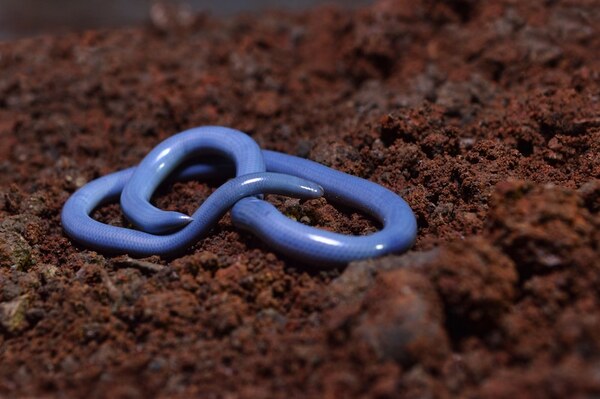The Brahminy blind snake, also known as Indotyphlops braminus, is a unique and intriguing creature that often goes unnoticed in the animal kingdom. This small, burrowing snake is a remarkable example of adaptation, thriving in various environments across the globe. In this article, we’ll explore the biology, habitat, behavior, and conservation of the Brahminy blind snake.

The Brahminy blind snake is a non-venomous species that belongs to the family Typhlopidae. It is known for its distinctive appearance, which includes a cylindrical, smooth body that can range from 10 to 15 inches long. These snakes are typically light brown or gray, with a shiny, almost iridescent quality to their scales. Their most notable feature is their lack of functional eyes, giving them a blind appearance, hence their name.
Size: Typically ranges from 10 to 15 inches (25 to 38 cm) in length.
Coloration: Generally light brown or gray, blending well with their subterranean environment.
Eyes: Very small and covered by scales, rendering them effectively blind.
The Brahminy blind snake is found in a variety of habitats, including tropical and subtropical regions. They thrive in moist soil, gardens, and agricultural fields, often burrowing beneath the surface. Their ability to adapt to different environments has allowed them to spread across many parts of the world, including Southeast Asia, parts of Africa, and even in some regions of the Americas.
Moist, Loamy Soil: Ideal for burrowing and foraging.
Gardens and Fields: Commonly found in areas with abundant organic matter.
Urban Areas: Can adapt to human-altered landscapes, making them a frequent visitor in gardens and yards.

Brahminy blind snakes are primarily fossorial, meaning they spend most of their lives underground. They use their specialized snouts to burrow through the soil, searching for food and shelter. Their diet mainly consists of small invertebrates, such as ants and termites, which they locate by sensing vibrations in the soil.
Invertebrates: Predominantly feed on ants, termites, and other small soil-dwelling creatures.
Foraging Techniques: Utilize their keen sense of smell and vibrations to detect prey in the dark.
The Brahminy blind snake reproduces through a process called ovoviviparity, where the female gives birth to live young. Mating typically occurs during the warmer months, and females can produce several offspring at once, contributing to their population growth in favorable conditions.
Mating Season: Generally occurs in warmer months.
Offspring: Females can give birth to multiple live young, enhancing their adaptability in diverse environments.

While the Brahminy blind snake is not currently considered endangered, habitat destruction and pesticide use pose potential threats to their populations. As burrowing creatures, they rely heavily on healthy soil ecosystems. Efforts to promote sustainable agricultural practices can help protect this unique species and its habitat.
Habitat Protection: Preserving natural habitats and reducing soil degradation.
Sustainable Practices: Encouraging farmers to minimize pesticide use to protect local fauna.

World’s Smallest Snake: The Brahminy blind snake is one of the smallest snakes in the world, making it easy to overlook.
Burrowing Expert: They are highly skilled at burrowing, often creating extensive tunnels beneath the soil.
Wide Distribution: This species has a remarkable ability to thrive in diverse environments, leading to its global spread.

The Brahminy blind snake may not be the most glamorous creature in the animal kingdom, but its unique adaptations and ecological role make it an important species. By understanding more about this fascinating snake, we can appreciate the diversity of life that exists beneath our feet. Protecting their habitats and promoting sustainable practices will ensure that these remarkable creatures continue to thrive in their natural environments for years to come.
Whether you're a wildlife enthusiast or simply curious about the natural world, the Brahminy blind snake offers a glimpse into the hidden wonders of subterranean life.
animal tags: Brahminy-blind-snake
We created this article in conjunction with AI technology, then made sure it was fact-checked and edited by a Animals Top editor.